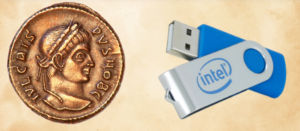

Promotional products have been an integral part of marketing strategies for centuries, evolving significantly over time. Let’s take a journey through the history of these powerful tools, from their ancient origins to their contemporary uses.
Ancient Beginnings
The concept of promotional products can be traced back to ancient civilizations. Historical records indicate that the Greeks and Romans used engraved coins and medals to commemorate events and honor individuals. These items were not only symbols of achievement but also served as early forms of advertising, promoting the issuer’s prestige and influence.
The 18th and 19th Centuries
The 18th century saw a more formalized use of promotional items. The earliest known instance of promotional products in America dates back to 1789, when George Washington’s presidential campaign distributed commemorative buttons. These buttons were simple yet effective tools for gaining support and spreading awareness.
The 19th century brought significant advancements with the Industrial Revolution. Manufacturers began producing promotional items on a larger scale. Items such as calendars, pens, and matchbooks became popular, as businesses sought innovative ways to reach consumers. This period marked the beginning of promotional products becoming an integral part of marketing strategies.
The 20th Century Boom
The 20th century witnessed the explosive growth of promotional products. With the rise of mass media and consumer culture, businesses recognized the potential of branded items to capture attention and build brand loyalty. The 1950s and 1960s, in particular, saw an explosion of creativity in the field.
Key milestones include:
1950s: The introduction of new materials and technologies, such as plastic and screen printing, allowed for more diverse and innovative products.
1960s: The rise of pop culture led to the creation of iconic promotional items like T-shirts and mugs featuring popular slogans and images.
The Digital Age and Beyond
The late 20th and early 21st centuries brought digital technology into the mix, transforming the promotional products industry. The internet enabled businesses to customize and order promotional items more easily, while advancements in digital printing allowed for higher quality and more intricate designs.
Today, promotional products are more diverse than ever, ranging from eco-friendly items and tech gadgets to high-end luxury goods. They play a crucial role in brand strategy, customer engagement, and loyalty programs.
Why Promotional Products Still Matter
Despite the rapid evolution of marketing tools and strategies, promotional products remain a cornerstone of effective marketing. They offer tangible value to recipients and create lasting impressions. The key reasons for their enduring relevance include:
Brand Visibility: Well-designed promotional products keep your brand in front of customers and prospects.
Customer Appreciation: They serve as tokens of appreciation, enhancing customer satisfaction and loyalty.
Cost-Effectiveness: Compared to other forms of advertising, promotional products often offer a lower cost per impression.
Conclusion
From ancient coins to modern tech gadgets, promotional products have a rich history that reflects broader trends in marketing and consumer behavior. As we look to the future, one thing remains clear: promotional products will continue to be a vital part of successful marketing strategies, adapting to new trends and technologies while maintaining their core value of connecting with people on a personal level.